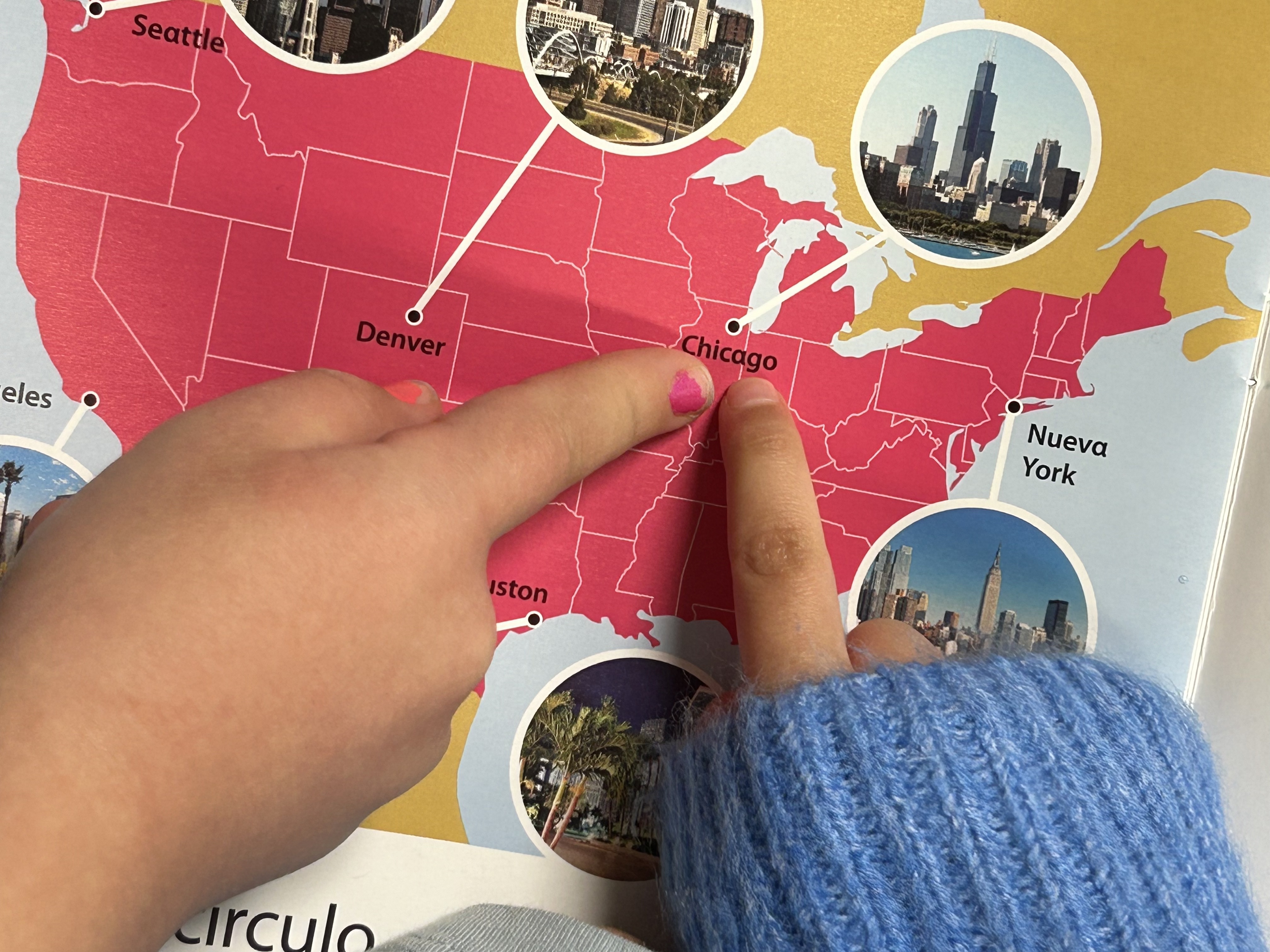About me
Dear reader,
My name is Citlali Arroyo. I am a third year teacher in Chicago Public Schools; a Boston College Donovan Urban Teacher Scholar (2020); and a Northeastern Illinois University Ronald E. McNair Scholar (2016). This research is part of my ongoing inquiry into developmentally appropriate curriculum and instruction; anti-racist classrooms; and youth and youth culture. Since participating in the Erikson Institute’s Racial Justice in Early Math Fellowship I have had wonderful experiences teaching math, and leveraged my own data to show student growth towards their intervention goals. I am proud to be one of the Chicago RJEM Fellows, and I hope to use my experiences to support the growth of new teachers and students wherever they are. In this project, I draw deep from personal experiences as an English language learner and public school kid from the north side of Chicago. I do this work to bring joy where there may be trauma, hope where there is hunger, and peace when it may be unattainable because I am as much a symbol of resilience to my students as they are to me. Without the teachers, professors, and mentors who laid the groundwork for me to make this a reality it may not have happened for me at all. I am one of the kids who almost fell through the cracks of an education pipeline, but I am still here.
This site was created to showcase how I incorporate culturally relevant pedagogy, the sociology of urban education, and language acquisition in a kindergarten classroom.


Background:
Chicago has received hundreds of thousands of South American asylum seekers this year, and I have been teaching my students in the very community I grew up in. It is important to me that my students feel secure in their identities, abilities, and emotions if they are to navigate a racialized social world. My class reflects a microcosm of what the city is and it is why I knew this cohort would be interacting with the reality of displacement, trauma, and assimilation more than others. My project inquiry asks: how do kindergarten students in a dual language class connect the social world to math?
Picture books became my answer to help students use math when problem-posing why someone can’t afford groceries, new shoes, or a bed. It was also a big factor during civic studies, and especially Black History studies. By the time February came around, my students were more than adequately versed in concepts of equity vs inequity, segregation/separation, and even white-privilege. By creating community during these read-alouds, students explored text connections to their worlds, peers, and individual experiences. Many students began requesting to participate in the small group sessions, and it was evident our meetings were enriching rather than remedial experiences. The books we read included a variety of Spanish math vocabulary to supplement the demands of the dual language immersion program, while the activities targeted the students’ progress monitoring goals for the duration of the third quarter of school.
From Charlesbridge Publishing:
“Charlesbridge publishes high-quality books for children, with a goal of creating lifelong readers and lifelong learners. Our books encourage reading and discovery in the classroom, library, and home. We believe that books for children should offer accurate information, promote a positive worldview, and embrace a child’s innate sense of wonder and fun. To this end, we continually strive to seek new voices, new visions, and new directions in children’s literature. In 2010 Charlesbridge acquired Imagine Publishing and expanded our children’s picture book list with books that included CD performances by notable personalities such as Peter Yarrow, Judy Collins, Kenny Loggins, and Neil Sedaka. Imagine Publishing also brought Charlesbridge into the adult trade publishing business with an eclectic list of nonfiction titles and cookbooks, as well as a popular list of puzzle books. Since our founding, Charlesbridge has had offices in Watertown, Massachusetts, which is located on the ancestral and unceded lands of the Massachusett and Pawtucket people. Today there are two federally recognized Native Nations in our state—the Mashpee Wampanoag Tribe and the Wampanoag Tribe of Gay Head (Aquinnah)—and one state-recognized Nation—the Nipmuc Nation. Charlesbridge is dedicated to uplifting voices that have traditionally been left out of children’s publishing. Part of that work is to recognize the full history of our country. We are committed to educating ourselves about Indigenous peoples’ history and present-day realities and to publishing Native authors’ and illustrators’ work.”
The texts I chose to include were selected after a search for bilingual math picture books. I entered into this worried my options would be limited, however, I was surprised to find a great resource called Charlesbridge. I chose “Los animales no se dormian / The Animals Would Not Sleep” by Sara Levine and paired it with a sorting/classifying activity; “Usha y la Gran Excavadora / Usha and the Big Digger” by Amitha Jagannath Knight matched with a spatial arrangement activity; and “Lia y Luís: ¿Quién tiene más? / Lia & Luis: Who Has More?” by Ana Crespo. After the final read aloud we practiced capacity by experimenting with objects and containers of different volumes. The students recreated our conversations during their snack when they realized several classmates had the same snack brought in different containers. By using high quality picture books, my students had a variety of racial representation in the main characters, which no doubt was one of the most appealing aspects for them. They also were centered in the storytelling, because each book drew directly from something they had experience in.




